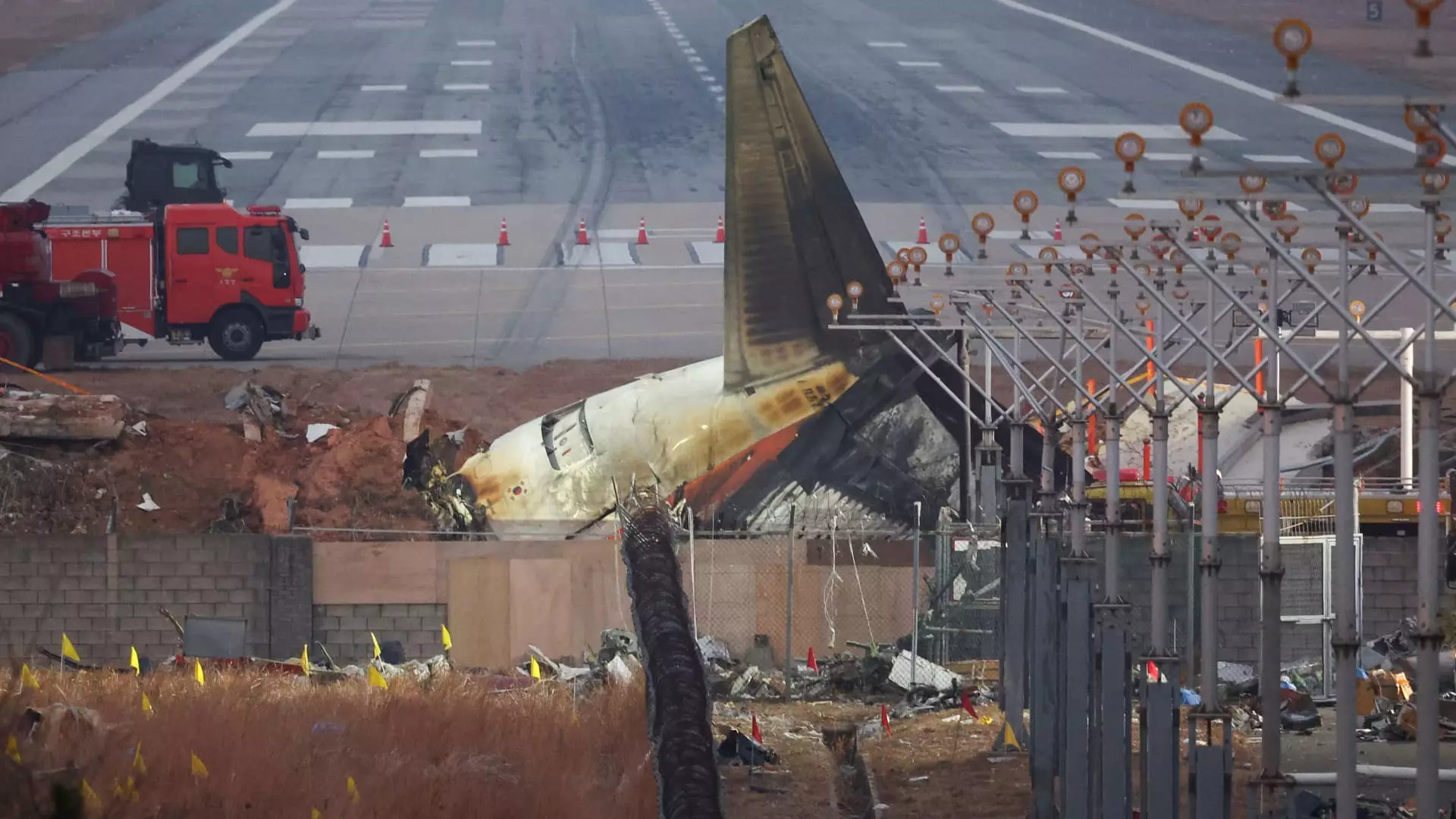On a fateful Sunday, South Korea experienced a devastating aviation accident when a Jeju Air flight met with tragedy, resulting in the loss of 179 lives. The incident took place upon landing at Muan International Airport, where the aircraft skidded off the runway and collided with a concrete wall, leading to a catastrophic fire. The wreckage became a poignant reminder of the fragile nature of air travel, especially as two crew members were the only survivors retrieved from the debris. This tragedy immediately raised alarm bells within aviation circles and triggered a sharp decline in Boeing’s stock prices, reflecting investor fears and the broader implications the crash could have on the airline industry.
In response to the incident, South Korea’s acting president, Choi Sang-mok, instructed the Transport Ministry to conduct emergency safety inspections on all Boeing 737-800 aircraft operated by local airlines. This directive was not merely a precautionary move but indicative of the gravity with which the South Korean government viewed the implications of the crash. The Ministry of Land, Infrastructure, and Transport (MOLIT) announced that a “comprehensive special inspection” of the B737-800 model would take place alongside a broader examination of the airline industry’s operational protocols.
As investigations unfolded, questions lingered around the specific details leading to the crash. Preliminary reports indicated that the aircraft’s pilot reported a “bird strike,” which occurred shortly after a warning about bird activity was issued by the control tower. The pilot’s call for a “go-around” suggests that a careful and cautious approach was initiated; however, circumstances spiraled out of control, culminating in a distress signal broadcasted through a “Mayday” call. Such details lay the groundwork for a rigorous examination of procedures, highlighting the need for aviation authorities to analyze potential causes—including mechanical failure and environmental factors—underpinning the incident.
Investigative Efforts and International Collaboration
The U.S. National Transportation Safety Board (NTSB), along with Boeing and the Federal Aviation Administration (FAA), has joined forces with South Korean officials to probe into the accident. The retrieval and analysis of the aircraft’s black boxes signal the beginning of an extensive investigation aimed at unearthing answers to critical questions that remain unresolved. The incident undoubtedly places additional weight on Boeing’s already battered reputation, a brand that has weathered severe scrutiny following previous crises, such as the 737 Max disasters.
A notable aspect of the investigation is the involvement of CFM International, the engine manufacturer associated with the aircraft. Their expertise in aviation safety could yield insight into the mechanical intricacies of the Boeing 737-800, drawing attention to the possibility of systemic issues that may compromise plane integrity or performance.
The Boeing 737-800 has historically been recognized for its solid safety records and represents a significant portion of global air traffic, with around 4,400 units operating worldwide. This incident compels experts and regulators to revisit and scrutinize the safeguards in place for such a prevalent model. Aviation authorities are expected to assess regulatory compliance across numerous aspects, including maintenance, inspections, and operational records.
Ju Jong-wan, the director of the Aviation Policy Office at MOLIT, underscored these intentions, emphasizing the need to review practices pertaining to bird strikes. Such environmental hazards present considerable risk and warrant heightened attention from regulatory bodies, especially given South Korea’s increasing air travel demands and new airport constructions in progress.
The consequences of the crash reverberated through local airlines, as Jeju Air saw its stock hit an all-time low following the tragic event. This reflects market concerns over safety and the potential ripple effects felt industry-wide as investigations unfold. Jeju Air’s leadership has expressed its commitment to supporting the families and victims, while maintaining that mechanical failures were not a factor in the incident, instead placing emphasis on adherence to strict safety protocols.
In the aftermath, analysts have voiced that the airline industry must be proactive in ensuring stringent safety measures are in place. Comparisons are drawn between the crashed 737-800 and previous instances of systemic airline failures, suggesting that now, more than ever, vigilance in operational safety is critical.
The tragic crash of the Jeju Air flight serves as a somber reminder of the perils associated with air travel. With investigations underway, it calls for a collective commitment from regulators, manufacturers, and airlines to prioritize safety and ensure adherence to aviation standards. As experts delve deeper into the causes and implications, the aviation community remains hopeful that improved safety measures will emerge from this tragedy, preventing such a loss of life in the future.


Leave a Reply